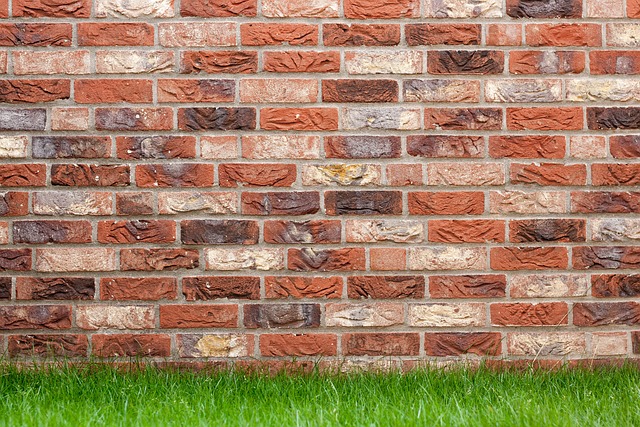Vertical gardening, a modern solution for maximizing green spaces in urban areas with restricted traditional landscaping, involves growing plants vertically using walls, fences, and structures. This innovative technique offers improved air quality, reduced maintenance, space optimization, and aesthetic appeal. Professional vertical garden installation services create customized solutions, incorporating diverse plant types based on climate needs and enhancing both indoor and outdoor environments. Key considerations include selecting well-lit, drained locations, strategic planning for depth and variety, and regular maintenance to ensure thriving greenery.
“Discover the transformative power of vertical gardening—a modern solution for maximizing greenery in minimal space. This innovative approach to landscape design is revolutionizing urban and indoor spaces, offering a fresh way to connect with nature. In this article, we explore the benefits of vertical garden installation services, from increasing green coverage to optimizing space utilization. Learn how to navigate design choices, maintain a thriving vertical oasis, and unlock the full potential of this sustainable practice.”
- Understanding Vertical Gardening: A Modern Approach to Green Spaces
- Benefits of Installing a Vertical Garden: More Greenery in Less Space
- Choosing the Right Location for Your Vertical Garden Installation
- Design and Layout: Creating an Esthetically Pleasing and Functional Vertical Garden
- Maintenance Tips for a Thriving Vertical Garden: Ensuring Longevity and Health
Understanding Vertical Gardening: A Modern Approach to Green Spaces

Vertical gardening is a modern approach to maximizing green spaces, especially in urban areas where traditional horizontal landscaping may be limited. By growing plants vertically, instead of spreading them out horizontally, you can transform walls, fences, and even entire structures into vibrant oases. This innovative technique not only adds beauty but also offers practical benefits such as improved air quality, reduced maintenance, and space optimization.
Vertical garden installation services have gained popularity due to their ability to create stunning visual effects while minimizing the physical footprint on the ground. These installations can incorporate a variety of plants, from vines and climbers to succulents and herbs, depending on the desired aesthetic and climate conditions. By leveraging vertical space, homeowners and urban developers alike can enjoy lush greenery year-round, enhancing both the interior and exterior environments in significant ways.
Benefits of Installing a Vertical Garden: More Greenery in Less Space

Installing a vertical garden is an innovative way to bring more greenery into your space, and it offers numerous advantages for both indoor and outdoor environments. One of the key benefits is its ability to maximize limited real estate. Traditional gardening often requires a large area for planting, but vertical gardens allow you to grow plants upwards, utilizing walls, fences, or freestanding structures. This makes it an ideal solution for urban dwellers or those with small yards who still want to enjoy the beauty and benefits of nature.
By opting for a vertical garden installation service, you can transform dull walls into vibrant green oases. These installations are not only aesthetically pleasing but also provide a more efficient use of space. Whether it’s fresh herbs in your kitchen, a colorful display on an exterior wall, or even a complete living wall, vertical gardening offers a unique and space-saving approach to enhancing your surroundings with greenery.
Choosing the Right Location for Your Vertical Garden Installation

When considering a vertical garden installation, selecting the perfect spot is the first step to success. Natural light is key for healthy plant growth, so choose a location that receives ample sunlight throughout the day. Many plants thrive in full sun (at least 6 hours of direct sunlight daily), but some varieties can tolerate partial shade. Additionally, ensure the space has adequate drainage to prevent waterlogging, which can be achieved by installing a suitable irrigation system or using well-draining soil and pots.
Vertical garden installation services often custom-design and install systems tailored to specific sites, whether it’s a small balcony, an indoor wall, or a large exterior wall. Professionals consider factors like available space, structural integrity, and your desired aesthetic to create a vibrant, efficient vertical garden that complements your living space and brings the beauty of nature indoors.
Design and Layout: Creating an Esthetically Pleasing and Functional Vertical Garden

Creating an eye-catching and functional vertical garden requires thoughtful design and layout. Start by considering the available space—walls, fences, or structures that can support the weight of plants. The design should blend seamlessly with your existing landscape, utilizing a mix of climbing plants, hanging baskets, and wall-mounted containers to create depth and dimension. Incorporate a variety of plant types, textures, and colors to add visual interest throughout different seasons.
When planning a vertical garden, functionality is key. Ensure proper drainage and irrigation systems are in place to keep plants healthy. Vertical garden installation services can help integrate these elements discreetly, allowing you to focus on the aesthetic appeal. Use a combination of trellises, arbors, or other support structures to guide plant growth, maintaining order while allowing for natural beauty to flourish.
Maintenance Tips for a Thriving Vertical Garden: Ensuring Longevity and Health

Maintaining a vertical garden requires consistent care and attention, but with the right techniques, your greenery will thrive. One key tip is to regularly inspect plants for any signs of pests or diseases. Early detection can prevent widespread issues, so keep an eye out for discoloration, wilting, or unusual growth patterns. Treating problems promptly ensures the health and longevity of your vertical garden.
Watering is another crucial aspect. Depending on the type of plants and the climate, you may need to adapt watering schedules. Vertical gardens often require more frequent watering due to their elevated position and reduced soil volume. Consider using a drip irrigation system or soaker hoses to efficiently deliver water directly to plant roots, minimizing waste. Regular cleaning of the garden’s structure and support systems is also beneficial, removing any dust or debris that could hinder plant growth. Engage professional vertical garden installation services for tailored advice and ongoing maintenance support.
Vertical gardening is a revolutionary approach to enhancing urban landscapes, offering an efficient way to incorporate more greenery into limited spaces. By choosing the right location and design, and with proper maintenance, individuals and businesses can enjoy the numerous benefits of vertical gardens, including improved aesthetics, better air quality, and space optimization. For those looking to transform their outdoor areas, professional vertical garden installation services provide a seamless solution, ensuring your green sanctuary thrives and becomes a beautiful focal point in any setting.
